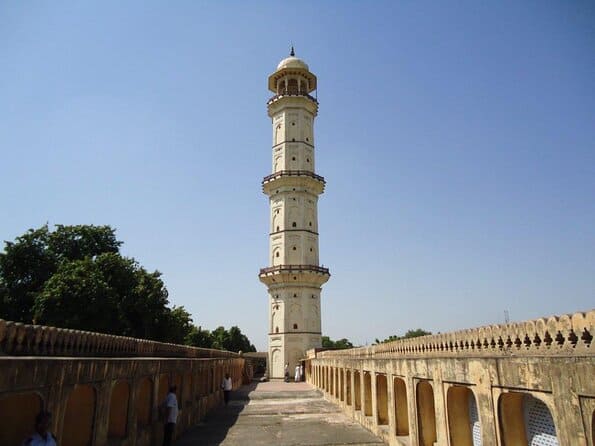
Amidst the cacophony of auto rickshaws, camels, bikes, buses and the many wallahs, you cannot help but marvel at Jaipur’s splendid beauty. As you wander through the pink lanes of Tripolia Bazaar, you pause and hope this moment stays with you as a vivid memory. In this Bazaar, unlike the pink that adorns its feet, a tower of white rises to the heavens. This is the story of Isarlat Sargasooli, once an imposing symbol of victory, now languishing and forgotten. The tower was erected in the year 1749. It was a symbol of victory after a war between two brothers over the crown of Jaipur. The founder of Jaipur, Maharaja Sawai Jai Singh II, had two sons - Sawai Ishwari Singh and Sawai Madho Singh. It was the understanding that Madho Singh, who was the nephew of the King of Mewar, would ascend to the throne. However, Jai Sigh wanted Ishwari Singh to be the heir. A civil war ensued between the brothers in 1744. Ishwari Singh was backed by the Mughals. Madho Singh had the support of the forces of Mewar, Bundi, Kota, and Marathas. The civil war finally ended in 1748, when Ishwari Singh defeated Madho Singh at the Battle of Rajmahal. It was to celebrate this victory that he commissioned Isarlat Sargasooli, a pristine white tower that was the tallest building in the city for a long time. Today, Sargasooli only registers as an afterthought in the memory of an average tourist. It is the tall white tower you notice, but never visit. After all, world-famous monuments like Hawa Mahal, City Palace, and Tripolia Gate are just a few steps away and more worthy of your limited time. To miss Sargasooli, is to miss the opportunity of a lifetime. The tower, maintained by the Archaeological Survey of India (ASI), is one of the very few towers in the country that tourists can still climb right to the top. To get to the tower, one has to explore the Bazaar the old- school way. Google Maps will not take you to the entrance. After taking directions from the extremely helpful locals, you will find yourself lost in a hardware market, surrounded by piles of sand and stacks of tiles and bathroom furnishings. There, tucked between two unassuming hardware stores, lies the small entrance to Sargasooli. As you walk in with hesitation, a huge courtyard with familiar Mughal architecture and motifs opens up. The magnificent Sargasooli rises to the skies, lost and forgotten in the silent gullies of Tripolia Bazaar. Inside the tower, is a circular ascent that continues for seven stories and finally opens up to a small platform that can barely accommodate ten people at once. The views from this spot are unparalleled, perhaps the best in the city. If you look straight, you can see the light dancing off the rainbow-coloured glass panels at Hawa Mahal. To your left, lies Jantar Mantar and its iconic sundial. Just next to it is the famous pink courtyard of the City Palace. To your right, you can spot the Nahargarh fort standing tall on the hills. As you take in the birds-eye view of this beautiful city, you are filled with an unexplainable emotion that only helps you understand why Ishwari Singh built this tower as a symbol of victory. Maybe he felt the same way as you did, right at this spot. The tower is also a chilling reminder of how victories can be easily forgotten, and how symbols lose their meaning, as history makes its way. Only Shakespeare can describe this best in words,
20 Apr 2023
Atharv Unhale